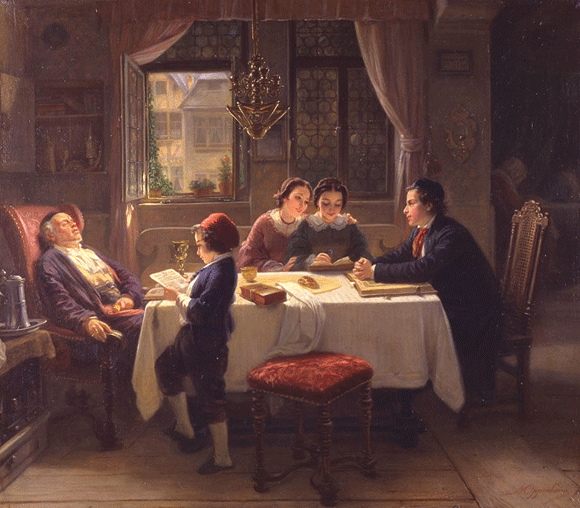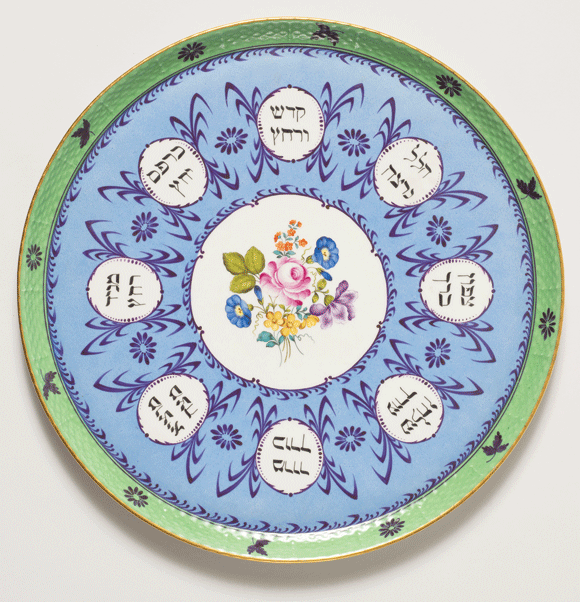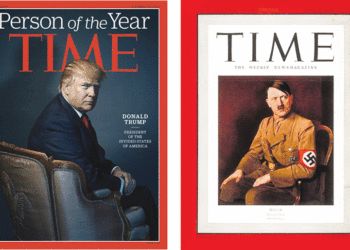By DORIS RUBENSTEIN
For regular museum patrons, social distancing and sheltering-in-place can leave us itching to get out and stroll through a gallery. Many Jewish homes have beautiful ritual objects on our shelves and in our closets, or some Jewish art on our walls, but it doesn’t compare with seeing some new and different Jewish art in an airy, well-lit museum.
Thanks to the internet, we can visit Jewish museums around the world. This article will be your Baedeker to the best in the U.S. and Israel. Let’s start our tour on the West Coast:
The Museum at the Skirball Cultural Center has an online version of the exhibition Visions and Values: Jewish Life from Antiquity to America from its permanent collection.

The first image, Manfred Anson’s “Statue of Liberty Hanukkah Lamp” (1985), truly epitomizes what it means to be an American Jew, not just a Jew in America. Each of the nightly candleholders has Lady Liberty not upholding a torch enlightening the world, but a cup to hold each night’s candle. Watching over this sacred ritual is the vigilant raptor, the American eagle in the role of the shammos, carefully guarding the flames that represent the eight miraculous days when our collective religious life kept alive with only a flickering, oil-soaked wick.
Sculptor Manfred Anson was a German Jew who survived the Holocaust and immigrated to the U.S. in 1963. Immensely proud and grateful to be an American, he designed his menora for the centennial of the Statue of Liberty in 1986 and donated the original to the Statue of Liberty National Monument.
Another item in the “Visions and Values” collection also is equal parts of American patriotism and Jewish tradition: A Torah mantle combining imagery of the American flag and the Tablets of the Law. Binding them together is the phrase “Proclaim Liberty Throughout the Land” in both English and Hebrew (which also is found on the Liberty Bell in Philadelphia).
The mantle is the work of Californian artist Peachy Levy. Levy and her late husband Mark were major philanthropists in the world of Jewish art and culture, and also were among the founders of Mazon: A Jewish Response to Hunger. It was their personal collection that formed the nucleus of the Skirball’s permanent collection.
Moving to the East Coast, our next stop is the Jewish Museum in New York City (thejewishmuseum.org/collection). While not as easily accessible as the Skirball’s website, the collection represented online is far more extensive.
Having visited Scotland for the first time two years ago, my eye was quickly drawn to a photo of a kilt. What was this doing in the Jewish Museum Art Collection? It’s part of the Decorative Arts section and is evidently the “official tartan” for members of our tribe… er, “clan.” This exclusive pattern in red and white on a blue background was designed by Brian Wilton of the Scottish Tartan Authority in consultation with Rabbi Mendel Jacobs, who is the head of Chabad in Glasgow. I wonder if a bolt of the cloth can be purchased from manufacturer Lochcarron of Scotland to make a tallit from it?

With Pesach soon upon us, the Jewish Museum’s online collection displays several seder plates. “Seder Plate” appeared to be decorated in the multitude of muted colors used by cartoonist Roz Chast at first glance; but it is really the work of Nicole Eisenman. This France-born (while her father was in the U.S. military) American artist has a remarkable résumé. She participated in the Whitney Biennial in both 1995 and 2012, won a Guggenheim Fellowship in 1996 and a MacArthur (“Genius”) grant in 2015. Her art has been exhibited worldwide, including in the Walker Art Center in Minneapolis.
No tour of Jewish art museums would be complete without visiting the Israel Museum in Jerusalem. The Israelis are not to be outdone by their American cousins and the website is lavishly stocked with a vast array of images from this wonderful institution. Clicking on the “Permanent Views” link connects you to a choice of four different collections, each initial linking photo more tempting than the next.
My finger itched to click on the Special Collections link which led me to a gallery of interesting archaeological art with a virtual “docent” who explained in great detail what I was seeing. The “docent” provides links to additional objects which, unfortunately, do not have their descriptions translated into English, but are still nice to look at and ponder.
I’m glad I clicked on the “Tour the Gallery” link. By clicking on either a list of individual gallery subjects or on a spot on the museum’s map, you are transported to the visuals in that part of the museum. Some subjects focus on ritual objects and art of various holidays; others cover subjects relating to things like illuminated manuscripts or clothing. I must admit I got a chuckle when the list showed the “Days of Awe” (as the High Holidays are often called) mistranslated as “The Awful Days”!
Of course, I’d rather be flying to each of these places to see this art in person. But this tour is the next best thing in these troubled times.



















